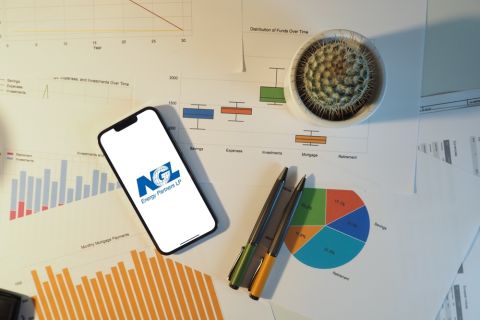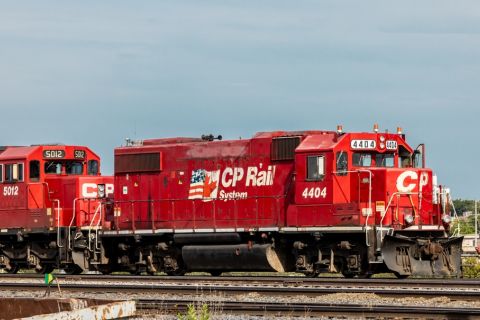 Comedian Garrison Keillor recently featured a song on his radio show written in the 1940s about a lovelorn romantic “waiting by the phone.” That may seem to be an odd lyric, Keillor patiently explained to younger listeners. Although they may find it hard to believe, “there was a time when all telephones were connected to a wire that came out of the wall.”
Comedian Garrison Keillor recently featured a song on his radio show written in the 1940s about a lovelorn romantic “waiting by the phone.” That may seem to be an odd lyric, Keillor patiently explained to younger listeners. Although they may find it hard to believe, “there was a time when all telephones were connected to a wire that came out of the wall.”
If for all of your life you could saunter down sidewalks, wait for buses or sprawl on the sofa, all while talking on an unconnected phone small enough to fit in a pocket, then the idea of a stationary, black thing on, or next to, a wall seems hard to fathom.
A similar change has occurred in the media. Gone are the days when “news” plopped in the driveway as a newspa-per or arrived on a television screen at 6 o’clock. News is continuous, free-flowing and moving through that creation of the Internet known as social media.
Facebook, Twitter, Instagram, WhatsApp, Tumblr, Linkedin—the available social media channels are by the dozen. The unique thing about social media is that the participants themselves generate the content, not a reporter or editor. A few broadcasting channels now confront narrowcasting competitors that carry specific messages on specific topics. It’s the difference between a shotgun and a rifle.
To his credit, President Trump figured out the potential impact of social media and won an election using it. Now, he seems fairly successful at governing the same way. This has caused no little consternation by the established big media who sense, correctly, that they may not be as important anymore.
How does this impact the midstream?
Look no further than the Dakota Access project. Kelcy Warren, CEO of sponsoring Energy Transfer Partners, told Bloomberg in a recent interview that the company “underestimated the power of social media” in its communications plan. The result was false information from opponents that created a firestorm of protest, and to which Energy Transfer did not immediately respond. The damage was done.
I recently visited with a wire service reporter who had been at the protest camp near Cannon Ball, N.D. He told me that he noted despite primitive living conditions, seemingly all of the protestors had cell phones and were regularly calling or texting someone, somewhere. He described visiting with one new arrival at the camp who seemed unaware of the issue at hand, but was calling a friend to come join him because “the food is good.”
Troy Eid, an attorney with Greenberg Traurig, said in a recent podcast—another social medium—featured on our Midstream Business website that hearings to consider pipeline projects that drew two or three participants a few years ago now draw 200 or 300. How do those people get the word? Credit texts and social media posts. What happened with Dakota Access “has fundamentally changed the way pipelines are built,” Eid said, and it will happen again.
The question midstream executives, and their corporate communications departments, must answer is: Has our cor-porate culture and policy kept up with the change? Social media is out there and we must participate if the midstream wishes to fulfill its growth potential.
We can use social media as effectively has anyone else. It’s time to get involved with the whole process of tweets, posts, hashtags, etc., and make the sector’s issues and achievements known. It may seem odd, like a stationary phone screwed to a wall, but it is the world we live and work in.
That said, personal meetings and conversation remain the best form of communication, and Hart Energy offers a great opportunity for that with its 3rd annual Midstream Texas conference, scheduled for May 23-24 in Midland, Texas. Find out more at www.midstreamtexas.com—and plan now to join us.
Paul Hart can be reached at pdhart@hartenergy.com or 713-260-6427.
Recommended Reading
NGL Growth Leads Enterprise Product Partners to Strong Fourth Quarter
2024-02-02 - Enterprise Product Partners executives are still waiting to receive final federal approval to go ahead with the company’s Sea Port Terminal Project.
PrairieSky Adds $6.4MM in Mannville Royalty Interests, Reduces Debt
2024-04-23 - PrairieSky Royalty said the acquisition was funded with excess earnings from the CA$83 million (US$60.75 million) generated from operations.
NGL Energy Partners Announces Cash Distribution
2024-02-08 - Payments to holders of NGL Energy Partners’ Class B and C preferred units will be made Feb. 27.
Enbridge Advances Expansion of Permian’s Gray Oak Pipeline
2024-02-13 - In its fourth-quarter earnings call, Enbridge also said the Mainline pipeline system tolling agreement is awaiting regulatory approval from a Canadian regulatory agency.
After Megamerger, Canadian Pacific Kansas City Rail Ends 2023 on High
2024-02-02 - After the historic merger of two railways in April, revenues reached CA$3.8B for fourth-quarter 2023.





